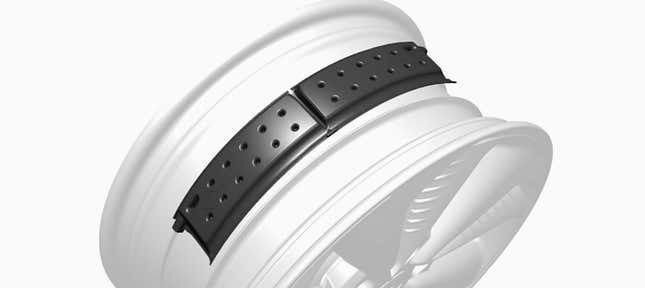
As electric cars have taught us, car tires are a major source of undesirable noise in a car’s cabin. Honda has an ingenious solution to the issue, hidden resonators that work to cancel out the noise tires make, kind of like noise-cancelling headphones. Tires are like balls in that they are made of rubber and filled with air. When a basketball smacks against the ground, it makes sound at a certain frequency and tires do the same. Honda’s engineers were able to calculate the frequency of that tire sound, and create passive resonators that live on the rim of the wheel inside the tire and cancel the unwanted noise as the air inside the tire moves.
Tires are hollow rubber cavities filled with air that are basically dribbling along the surface of the road. The noise generated inside of a tire is called pipe resonance, and is transmitted through the suspension into the car’s cabin creating the tire noise that vehicle occupants hear. Honda employed the concept of Helmholtz resonance, the phenomenon that generates sound when a person blows across the top of an empty bottle, to create a resonator that wraps around the wheel and generates a frequency to counteract the tire resonance when air moves inside the tire.
According to Honda, noise reducing wheels drastically reduce tire noise experienced inside the cabin. The resonators are made from a lightweight resin, and they’re secured to the wheel partially by centrifugal force. They can withstand 1,500 times the force of gravity during high speed driving, and the design minimizes unsprung weight which helps maximize driving enjoyment. Honda introduced the first practical noise reducing resonator in 2010, and has since developed a second-generation resonator that is half the weight of the first generation.
Innovations as simple and effective as Honda’s noise-reducing wheels aren’t common, with other manufacturers relying on tires that have slices of foam rubber inside them to absorb the frequencies. Honda’s solution mitigates more noise and could be paired with foam-filled tires to further minimize interior noise.







